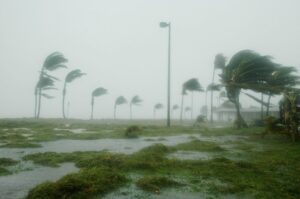2021 was one for the books for many reasons and we see these trends continuing into 2022. We’re here as a resource to help you navigate through these. We encourage you to read through and reach out with any questions that you may have and to discuss these in more detail specific to your family.
Supply Chain Issues and Labor Shortages


Both are affecting how you should be insuring to value on your policies.
- Are you planning or have you completed a recent renovation or addition? Many are thinking of making updates to their current living space if they haven’t done so already. Let’s discuss to make sure your homeowner policy limits are appropriate so you have adequate protection in the event of a claim. A recent Wall Street Journal article highlights shortfalls that many homeowners faced in the recent Colorado wildfire.
- The labor and material shortages and supply chain issues have caused increased home replacement costs. Asphalt roofing prices are up 9.9%, lumber and wood prices are up 34.2%. They shortages have forced many to make changes in renovation plans and caused delays in estimated project completion dates for construction. We can help to keep tabs on things throughout the renovation or construction process and provide guidance on loss prevention during this increased risk exposure.
Risks are Changing, No Matter Where You Live
Let’s prevent things from happening in the first place with risk management:

- Wildfire prone area? Let’s discuss fire resistive home components and fuel load mitigation. Markets have been tightening out west because of the historic number of wildfire events and insurance carriers need for adequate rate.

- Hurricane prone area? Let’s discuss your roof construction characteristics, opening protection, and flooding concerns. Florida, in particular, has been experiencing a hardening insurance market. Knowing what your options are and selecting quality coverage is important.

- Severe weather? These weather patterns are becoming the new norm. Hurricane Ida made landfall in Louisiana but didn’t stop there. It caused severe flooding damage to homes all the way up through the Northeast. Make sure you’re taking flood insurance into consideration and how a home was built. We can help you with this early in the house hunt discussion. Making sure that your home is properly elevated can make a big difference in how much you pay in the long run and how ready your home would be in the event of a significant hurricane or flooding event. Texas experienced a historic winter storm with temperatures 40 degrees below average. Whether we’re discussing extreme temperatures, hurricanes or flooding, there are preventative steps that you can take to prepare for events like this and make sure your policies are up to date with robust terms and limits. Let’s make an emergency preparedness plan. Let’s discuss a water leak detection device, a low temperature monitoring system, and flood insurance.

- Water leaks – they can happen to anyone. Whether you’re at home or you’re traveling, this is a trend that we do not see going away anytime soon. However, they can be avoided! As you’re thinking of home improvements over the next year, consider installing a water leak detection shutoff device. This can save you the headache of having to live elsewhere or the inconvenience of repairs being made after a frozen pipe burst or pipe leak. Many carriers offer a credit on their homeowner’s policies once installed and potentially a discount on the product itself to reward you for your risk avoidance efforts.
- Renovations? That means more foot traffic through your home, potentially the use of flammable materials or working with electrical components. Let’s talk about risk prevention and easy steps you can take to safeguard your home while work is underway.

- Cybersecurity concerns have grown exponentially during the pandemic. With individuals working from home and children learning remotely, there is a lot more activity on an individual’s personal network. There are personal cyber protection policy options and also risk management items to consider.

- We are living in a forever litigious society. Let’s discuss your personal risk profile and make adjustments to your umbrella limits, if needed. A recent verdict from a homeowner’s pool is enough reason to consider. If there has been a liquidity event, make sure you update your liability limits.

- Relocations or secondary home purchases. Thinking of moving? So is a large portion of the US population if they haven’t already. Let’s discuss risk and rating factors when looking at new homes as they can vary state to state. There can also be significant credits at play depending on when and how a home was updated and we can help you weigh out some of the pros and cons of making that move from an insurance and risk management perspective.

- Claims: Labor and material shortages and supply chain issues have impacted automobile policy and homeowner claims both from a paid claim amount and delays in the process causing claims to remain open while clients remain out of their homes or without their regular use vehicle. We are here as a resource if something happens. We want to make sure a claim is handled as smoothly as possible and to help you understand the process up front before we submit a claim. The microchip shortage has caused a ripple effect in the auto industry causing shortages in new and used vehicles for purchase, availability of rental vehicles and also automobile parts when repairs are needed after an accident.

- Collectors, diversified. The pandemic has proven to be an opportunistic time for some individuals. Deferred or cancelled vacations left some with funds to focus elsewhere. Have you recently purchased any jewelry? Watches? Wine and Spirits? Collector vehicles? It may be time to readdress.
Please reach out if any of these have struck a chord and we can discuss what changes or action plans we may recommend.
Updated 6/21/22
